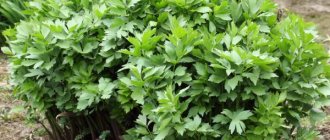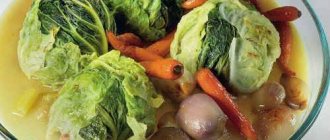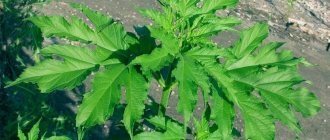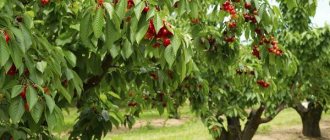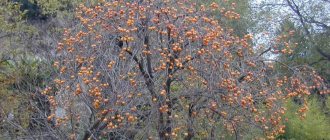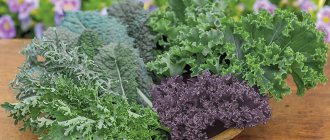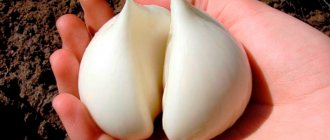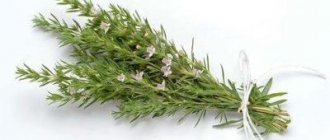Origin of culture
Swiss chard is a subspecies of the common beet. The South and Center of the European continent are considered the birthplace of culture.
The vegetable crop chard is considered one of the most ancient. Scientists suggest that it was cultivated another 2 thousand years BC. e. Chard beets appeared as a result of folk selection. There is a version that the vegetable was obtained by artificial selection from ordinary beets.
In Russia, the crop has been planted since the 16th century. Here it has long been called “beetroot”.
Due to climate and soil changes, the plant evolved - the root crop spread wider, the tough tissues acquired juiciness and fleshiness. Chard is essentially the ancestor of table beets, so these two crops have similar agricultural practices.
A few words about site preparation
Chard can be grown next to potatoes, cucumbers, and other plants. Light fertile loams are more suitable for it; it requires a moderate level of humidity and good lighting. It can grow in unsuitable conditions (partial shade, acidic soil, dry soil), but the quality of the product’s taste will suffer greatly. That is why it is better to prepare the site for cultivation in the fall and add compost to the dug up soil. Then the leaf beets will reciprocate – with a high and high-quality harvest.
Description of the plant
The culture belongs to the genus Beetroot from the Amaranthaceae family, and develops in a two-year cycle. In the first year of life, the plant develops a rosette of leaves, and in the second year it blooms, producing seeds.
In appearance, chard resembles ordinary beet tops. It has inedible roots; only leaves and petioles are eaten.
Brief description of the plant:
- Leaves. Glossy, elongated, bubbly. They differ in the degree of curliness - depending on the variety.
- Stems. Meaty and strong. The color of the stems depends on the variety; they can be bright yellow, silver, burgundy, and green.
- Root. Elongated, cylindrical. The pulp is white or reddish. It has a hard structure and an unpleasant taste. By the end of the season it grows to the size of a fist and acquires the same color as the petioles.
Characteristics of Swiss chard:
- The stems of chard taste better than the leaves. They taste like rhubarb or celery.
- More cold-resistant than the table variety. Therefore, it can be sown earlier and harvested before frost.
- Productivity during industrial cultivation is 70-100 t/ha.
All varieties of leaf beets are divided into two large groups:
- Petiolate (stem). They have characteristically prominent veins. The leaves are small in size, and the petioles are very thick and juicy. They can be used instead of asparagus. To make the stems grow larger and thicker, gardeners resort to pruning leaves.
- Leafy. These varieties have lush rosettes of large, fleshy leaves. Such chards have a second name - Roman cabbage. They can replace lettuce, cabbage, spinach and other leafy vegetables in various dishes. The plant can overwinter in the soil, producing a crop of fresh leaves in early spring.
Interesting facts about chard
- Due to some external similarities, chard is often confused with spinach and vice versa.
- Even in ancient times, chard was used to treat blood poisoning, fevers and other infections.
- He does not tolerate the proximity of his own kind in the garden - cabbage, beets and spinach. All beneficial properties in this case are reduced in chard.
Source
More articles from the section “Benefits and harms of products”
What kind of bulgur grain is it, what is it good for and possible harm
Cod caviar - benefits and harm, properties
How to drink red wine correctly, benefits and harms
Is Hematogen a tasty treat or a medicine?
Advantages and disadvantages
When deciding whether to grow chard on their plot, gardeners should evaluate the advantages and disadvantages of this crop:
Pros of Swiss chard:
- ripens early;
- looks beautiful;
- good taste;
- unpretentious;
- bears fruit for a long time;
- rich in vitamins and minerals;
- tolerates cold well;
- does not deplete the soil;
- is a favorable neighbor for other vegetable crops;
- withstands adverse environmental influences;
- has high immunity;
- productive;
- contains a lot of proteins and pectin;
- low-calorie.
The only disadvantage of chard is the difficulty in preparing it for the winter. Frozen and pickled leaves and petioles bear little resemblance to the fresh product in taste and smell.
Useful properties of chard
All food components, of course, are very beneficial for the human body, but chard gives special joy to the fairer sex due to its ability to improve the condition of skin and hair. All thanks to the content of a special organic compound - biotin.
Biotin improves hair structure, it becomes softer and less prone to split ends, and a healthy shine appears. By stimulating hair follicles, biotin accelerates hair growth.
A deficiency of this compound can cause frequent rashes and inflammation on the skin. Therefore, systematic use of chard will help improve the appearance of the skin and promote the appearance of a healthy, radiant complexion.
For men
Men, as representatives of the stronger sex, need nutrients in double quantities. Therefore, chard simply needs to be included in the diet of men. A large amount of vitamin A promotes good cell renewal, selenium and zinc will help normal testosterone production, and all this together improves male strength and the performance of the reproductive system.
During pregnancy
Pregnancy requires special attention to nutrition, so you need to strictly monitor what you can eat and in what quantity. The diet should be rich in useful components that are necessary for the proper development of the fetus - protein, calcium, iron, vitamins and minerals.
The presence of vitamins in chard, some even in excess, will allow not only the mother, but also the child to receive them, which will contribute to his health and normal growth. Vitamin C will strengthen the expectant mother’s immunity and protect her from viruses and bacteria. Iron will improve blood circulation, normalizing hemoglobin levels and reducing the risk of anemia.
When breastfeeding
The health of a breastfed baby directly depends on what foods are included in the mother’s diet and what they are rich in. Immediately after birth, a baby needs a supply of nutrients through mother's milk.
The presence of chard in the diet will provide the baby with phosphorus and calcium. These are necessary components for the proper construction of the bone skeleton and the musculoskeletal system as a whole. Sodium will regulate the exchange of fluids and salts in the body, relieve the mother of edema, and improve the functioning of the child’s kidneys.
For children
A child's body is susceptible to a large number of attacks from the outside world at a time when its nutrition no longer depends on mother's milk. Therefore, vitamins and minerals must be supplied with food; the proper growth and development of the entire organism depends on this.
We recommend reading: Black cumin oil - uses, benefits, harm, properties
To protect the baby from diseases, parents must ensure that the products contain a sufficient amount of vitamin C. A child is unlikely to agree to eat sour lemon, but vegetable puree with the addition of chard is an interesting product, bright in color and neutral in taste. The presence of calcium in it will help the formation of bones and tendons during growth, and phosphorus will help with mental development and strengthen the bone skeleton.
When losing weight
A healthy diet involves combining benefits and low calories for better results. The foods included in the diet should contain all the nutrients necessary for the body, and also give a feeling of fullness even in small quantities.
Swiss chard copes well with this role. The high fiber content minimizes the risk of overeating and snacking, as this product can quickly fill you up. When consuming this vegetable, metabolism improves, which promotes the rapid breakdown of fats.
It has been scientifically proven that people who include plenty of vegetables in their diet suffer less from excess weight. If this problem already exists, they lose weight faster than those who limit themselves in food and starve their bodies.
Chard is a striking example of how you can lose weight profitably and without harm to your health.
Popular chard varieties and their characteristics
There are many varieties of leaf (salad) beets, which differ from each other in the color of the stems and the roughness of the leaves.
First of all, you should pay attention to the varieties:
- Precocious. Mirage (41-42 days), Ruby (34-38 days), Scarlet (35-40 days), Garnet (32-41 days).
- Color resistant. These are varieties Garnet, Ruby, Scarlet.
Popular varieties of Swiss chard:
- Emerald. Compact plants with vertical rosettes and wide petioles. Plant height is 30-45 cm. The leaves are light green. The yield of one bush is 1 kg of petioles and leaves. This is an early ripening variety with a growing season of 60 days.
- Scarlet. Bloom-resistant hybrid. Early ripening, the first harvest is ready in 35-40 days, reaching full ripening in 90 days. The rosette is spreading, the leaves are violet-green, bubbly, up to 60 cm long. The length of the petioles is up to 25 cm. The color is red. From 1 sq. m, 3-5 kg of leaves and petioles are collected, in a greenhouse - 10 kg.
- Green. Late-ripening variety, ripening in 85-120 days. The socket is semi-vertical. Plant height is up to 60 cm. The leaves are dark green, bubbly, glossy. Petioles are green, up to 25 cm long.
- Gorgeous. Hybrid variety with compact vertical rosettes. The leaves are large, dark green, the petioles are bright red. Length – 40-45 cm. The leaves are wavy, juicy and fleshy. Ripens in 60 days. 0.8 kg of greenery is collected from one plant.
- Silver. The bushes are powerful, the leaves are fleshy and green. Petioles are silvery-white. The leaves are curly-bubbly or smooth-wavy. Productivity can reach 6 kg per 1 square. m.
Description of culture
Chard salad is native to the Mediterranean. In our country today, this amazing vegetable is not yet very widespread, and completely undeservedly. Perhaps someone, having learned about chard and how to grow it, will want to plant a delicious salad in their beds. The culture is a real storehouse of nutrients, minerals and vitamins.
As a horticultural crop, chard is a biennial plant that many consider to be a variation of the popular vegetable beet. The history of Swiss chard dates back more than three decades. In the times of Ancient Rome, almost no feast was complete without scarlet chard. It was an integral component of a huge variety of dishes.
Nowadays, the beneficial properties of the vegetable are known to many. But ice mango is popular not only as a vegetable crop, but also as an ornamental plant. Thanks to its colorful above-ground parts, Swiss chard or red chard is often used for planting in flower beds. Depending on the variety, the color of the plant can be green, red, yellow and even silver.
Chard
Note! Despite the fact that the roots of the culture are southern, chard is suitable for planting in almost any region of our country, be it the Moscow region, the Urals or Siberia.
As a vegetable garden crop, chard is grown primarily for its petioles and leaves. It is the leaf of this plant that contains the bulk of useful substances. Chard comes in two main varieties:
- petiolate;
- sheet.
The first is characterized by thickened and wide petioles, which are used in approximately the same way as asparagus - steamed, deep-fried, used to prepare various dishes.
The second type is leafy, characterized by especially juicy and healthy leaves, which can be used in the same way as cabbage, for example, for making cabbage rolls and vitamin salads. The famous English chef Jamie Oliver has many interesting recipes that involve the use of chard.
Growing conditions
Not only the quantity of the crop, but also its quality characteristics depend on the growing conditions. The taste of the above-ground part is influenced by the composition of the soil, adherence to agricultural technology, temperature, lighting and other factors.
Selecting a location
Good harvests of chard can only be obtained on fertile soils. In poor and heavy clay soils, chard leaves grow coarse and tasteless.
What should be the area for growing chard:
- Soil acidity from pH 6.
- Good lighting.
- Planting in lowlands where there is stagnant water is not allowed. The culture does not tolerate waterlogging.
When choosing a site, observe the rules of crop rotation. Chard does not grow well after spinach.
Recommended predecessors:
- carrot;
- radish;
- legumes;
- tomatoes;
- cucumbers;
- potato;
- radish.
In one place, leaf beets are grown at intervals of 3-4 years.
Soil preparation
The soil for chard is prepared in the same way as for table beets. The culture needs loose, permeable, fertile soils. On poor soils, leaf beets lose their juiciness, their petioles become rough and stringy.
The soil is dug up in the fall to a depth of 30 cm, adding the following components:
- compost, peat, humus or other organic fertilizer - 4-5 kg per 1 sq. m;
- superphosphate – 20-25 g;
- potassium chloride – 15-20 g.
In heavy soils, dense and clayey, add sand to loosen the structure.
Temperature and light conditions
In order for chard to produce a lot of tasty leaves, it needs certain temperature conditions and compliance with the light regime.
Features of temperature conditions:
- optimal temperature for growth – from +16 to +25°C;
- during flowering – from +20 to +25°C;
- if the crop is provided with good watering, it can grow normally even at +35°C;
- seeds sprout at +6….+7°C;
- young plants, being in the phase of 3-4 true leaves, are able to tolerate low temperatures down to -3°C.
Chard does not require special lighting. This plant grows well both in illuminated areas and in light shade.
When planting a crop in partial shade, you need to consider the following points:
- with a lack of sunlight, a lot of nitrates accumulate in chard leaves;
- prolonged shading leads to slower growth and smaller leaves.
Chemical composition of chard
The vegetable is low in calories. A 100-gram serving contains only 19 kilocalories. For comparison: celery, which is called a negative calorie product, has 13 kcal.
Nutritional value is presented in the table.
| Name | Weight in 100 g | % of norm |
| Squirrels | 1,8 | 1,96 |
| Fats | 0,2 | 0,29 |
| Carbohydrates | 2,1 | 1,49 |
| Alimentary fiber | 1,6 | 8 |
The vitamin balance is presented below. Data taken from the official website of the National Nutrient Database for Standard Reference.
| Vitamin | Amount in one hundred grams | % Daily Value |
| A | 30,6 | 34 |
| beta carotene | 3,7 | 72,9 |
| B1 | 0,04 | 2,7 |
| B2 | 0,09 | 5 |
| B4 | 18 | 3,6 |
| B5 | 0,17 | 3,4 |
| B6 | 0,099 | 5 |
| B9 | 1,4 | 3,5 |
| C | 30 | 33,3 |
| K | 83 | 691,7 |
| PP | 0,4 | 2 |
Chard is a valuable source of beta-carotene, which is called the “elixir of beauty and youth.” The most important carotenoids are lutein and zeaxanthin. Powerful antioxidants protect cells from free radicals.
In terms of vitamin C, the product falls slightly short of the recognized leaders - lemon and orange. But at the end of winter he will supplement his diet with a serious dose of ascorbic acid. This will help resist viruses and support the immune system just as well as fresh fruit.
Most of all it contains vitamin K. Its main function is to regulate blood clotting. The substance protects against osteoporosis and helps absorb calcium.
I put the mineral composition of chard in a table.
| Element | Amount per 100 g, mg | % Daily Value |
| Potassium | 379 | 15,2 |
| Calcium | 51 | 5,1 |
| Magnesium | 81 | 20,3 |
| Phosphorus | 46 | 5,8 |
| Iron | 1,8 | 10 |
| Manganese | 0,37 | 18,3 |
| Copper | 17,9 | 17,9 |
| Selenium | 0,09 | 1,6 |
| Zinc | 0,36 | 3 |
Chard is a source of selenium, an essential mineral for improving immunity and the synthesis of thyroid hormones. It contains sulfur in small quantities. But there is a lot of sodium, so it is not necessary to add salt to dishes with it.
Beets contain essential amino acids:
- tryptophan,
- methionine,
- arginine,
- lysine,
- leucine,
- valine,
- histidine,
- isoleucine,
- threonine,
- phenylalanine.
These compounds are not produced by the body, so they must come from food. In addition, omega-3 and omega-6 fatty acids were found in the plant.
Planting Swiss chard
Chard can be grown using a variety of methods. Let's find out how and when to plant Swiss chard.
Deadlines
Chard is a cold-resistant crop that produces early greens. The first harvest of Swiss chard is harvested when other green vegetables have not yet grown.
In order to always have a harvest of leaf beets, they are sown three times:
- in the beginning of May;
- in July;
- at the end of October.
More precise sowing dates depend on the variety and climatic characteristics of the region. The main condition for sowing seeds is warming the soil to +5°C.
In the south of the country, seeds are sown 2-3 weeks earlier than in other regions. In areas with cool and short summers, it is recommended to use seedlings or greenhouse growing methods.
Spring sowing technology
Before sowing seeds in the ground in spring, they are soaked in warm water (+40°C). After 2 days, the seeds are ready for planting. Instead of water, you can use a biostimulant, for example, "Epin", in which the seeds are kept for 2 hours. Chard is planted in a row manner.
How to plant Swiss chard:
- Make small furrows in the beds. The spacing between adjacent furrows depends on the type of chard:
- for petiole varieties - from 35 to 50 cm;
- for sheets - 20-30 cm.
- Place the sprouted seeds along the grooves. The distance between adjacent seeds is from 2 to 5 cm.
- Cover the seeds with soil. Layer thickness – 3-4 cm.
For sowing 1 square. m requires 1-1.5 g of seeds.
Sowing before winter
Chard can be sown before winter. This method of cultivation is practiced in regions characterized by short winters and mild frosts.
Features of winter sowing:
- Prepare furrows for sowing in advance.
- Prepare a bucket of dry soil and leave it in a warm room.
- Wait for frost. Sow seeds in frozen soil. Place them in furrows at intervals of 2-5 cm. The sowing pattern is similar to spring sowing.
- Cover the seeds with prepared soil - dry and warm.
- Shoots appear in early spring, and if there is a threat of frost, it is recommended to cover them.
Seedling method
The seedling growing method is practiced in regions with long winters and short, cool summers. The harvest obtained through seedlings is harvested a month earlier than when sown in beds.
Growing chard using seedlings:
- Sow seeds for seedlings in March or early April. Sow the seeds in purchased substrate or garden soil. Sow not densely so that the seedlings do not interfere with each other. The distance between neighboring seeds is 2-3 cm.
- Cover the crops with transparent material and place in a warm place. After 4-5 days, shoots will appear.
- Move the seedlings closer to the light. The optimal temperature for seedlings is from +13 to +15°C.
- Thin the seedlings once, leaving 7 cm between seedlings.
- 30-35 days after sowing, the seedlings will have 2-3 true leaves; transplant them into open ground according to the same scheme as when sowing in open ground - 40-50×20-30 cm.
Chard, what is it?
Chard is a fairly vigorous plant that can grow to a height of 60-70 cm. This depends on the variety. Chard is a close relative of ordinary beets, but it does not form a root crop, but is valued precisely for its above-ground part - a lush rosette of large vesicular leaves rising above the surface of the ground on tall thick petioles.
Chard has several names - chard, leaf chard, petiole chard. It is grown to produce tasty and unusually healthy leaves.
Not only the leaves are eaten, but also the juicy, fleshy stems, which, with proper care, reach a diameter of 7-8 mm. The petioles, like the leaves, are incredibly rich in vitamins, minerals, trace elements and various valuable compounds. If you introduce regular consumption of this vegetable plant into your diet, you can best boost your immunity and improve your health.
Of the varieties that I planted on my plot, I especially liked the mid-season chard variety Bride, which allows the first cutting of greenery to be carried out 55-65 days after emergence. The plant reaches a height of 50-60 cm, has large wavy dark green leaves and very thick white petioles, which are particularly juicy and piquant in taste.
Variety Bride
The Krasavitsa variety is no less tasty, ripening in the same time frame. This variety of chard also allows for several cuttings per season and is characterized by high yield. In addition, it is also unusually decorative: a lush rosette of green leaves with red veins reaches a height of 60-70 cm and looks very elegant in the garden, thanks to its thick, bright crimson petioles. And he can decorate any flower garden!
Rules of care
Beetroot does not require complex care; it is a hardy and unpretentious plant. The gardener’s task is to create such conditions for the harvest to be not only plentiful, but also with excellent taste characteristics.
Thinning
Several sprouts grow from each seed, so the plantings have to be thinned out several times. Thickening of chard is unacceptable. Plants growing close to each other develop poorly and the risk of developing fungal diseases increases.
Features of thinning leaf beets:
- Several thinnings are carried out during the season.
- All weak shoots must be removed. Sprouts that emerge later than others are also removed.
- The result of thinning should be the distance between neighboring plants:
- for petiole varieties - 40 cm;
- for leaf varieties - 15 cm.
Watering
Leaf beet is a moisture-loving crop, which slows down growth and development if there is a lack of moisture.
Features of watering chard:
- Watering frequency is once every 2 days.
- During drought, watering becomes more frequent, as lack of water leads to leaf wilting.
- The crop is especially demanding at the stage from sowing to the appearance of sprouts.
- To retain moisture, the soil is mulched.
- When watering beets, it is important to maintain a balance - chard reacts equally negatively to drought and stagnant water.
Loosening and weeding
After watering, it is recommended to loosen the soil, simultaneously pulling out weeds. They loosen the soil with a rake, the direction of movement is across the rows. Loosening, improving aeration, prevents the development of many diseases.
To prevent the growth of weeds and slow down moisture loss, the soil is mulched with peat or humus.
Top dressing
The culture is responsive to fertilizing. The bulk of fertilizers are applied before sowing or planting seedlings.
Fertilizers are applied:
- during growth;
- at the stage of cutting leaves and petioles.
Chard can be fed:
- diluted mullein (1:5);
- herbal infusion;
- urea (10 g per 10 l).
When growing chard, it is not recommended to apply mineral fertilizers, since nitrates actively accumulate in the leaves.
Sowing seeds in the ground
in spring
Chard is a cold-resistant plant, so seeds can be sown in open ground as early as April. Seeds germinate at a temperature of +5°, the first shoots will appear within 15 days.
Interesting! The higher the temperature, the faster the seeds will germinate.
You can improve the germination of seed by soaking it in warm water for a day. During this time, the seeds will hatch, and then they can be sown.
- Furrows are made in the area 3 cm deep. In the row spacing they leave: for petiole varieties 35 cm, for leafy varieties 30 cm.
- The seeds are placed in furrows at intervals of 2-4 cm.
- Subsequently, thinning is carried out several times. Weak, late shoots are removed. As a result, there should be an interval of 40 cm between petiole varieties, and 15 cm between leaf varieties.
Important! Densified plantings lead to improper development of foliage and the appearance of fungal diseases.
Seedlings are resistant to short-term frosts down to -3°C. With a prolonged decrease in temperature, the culture slows down its growth. Instead of growing leaves, chard sends out a flower stalk and quickly sets seeds. This leads to a significant reduction in yield.
Advice! If cold weather is expected, it is better to cover the bed with agrofibre at night; sometimes it is not removed even during the day.
When sowing seeds early, germination can be accelerated:
- To do this, 30 days before sowing, the bed is covered with black polyethylene. Under it, the snow will melt faster and the soil will warm up well.
- When the soil is warmed to +5°C at a depth of 4-5 cm, chard can be planted.
- Arcs are installed over the bed. A white covering material with a density of 30-40 g/m2 is pulled over them.
- The material is not removed until the outside temperature rises above +15°C.
- Until this point, the soil must be moistened regularly.
Interesting! Chard produces a high yield, so for a family of 3-4 people it is enough to plant 5-7 plants. With proper planting and care, the collected leaves and petioles are enough for fresh consumption and freezing for the winter.
Watch the video! Growing chard in open ground
Late autumn
You can also sow chard seeds before winter, especially in regions with short winters with light frosts.
The seeds germinate early, so it is better to cover the seedlings when it gets cold.
- Furrows are made in advance.
- A bucket of dry earth is left in a warm room.
- After the ground freezes, the seeds are placed in furrows and covered with warm, dry soil on top.
Important! Frequent winter thaws negatively affect seed germination.
Growing chard at home
Leaf beets can be grown not only in gardens or greenhouses, but also in pots placed on the balcony or windowsill.
Features of growing at home:
- The culture is planted in pots or boxes with a height of 15 cm.
- For planting, a special substrate is used - it already contains the entire set of nutrients.
- To further enrich the soil, you can add organic matter. The addition of charcoal is also recommended.
- Seeds are prepared for planting in the usual way, soaking for 2 days.
- Sowing is carried out in early May.
Disembarkation order:
- Water the soil in the pots with hot water so that the soil warms up.
- Make furrows 2 cm deep in the soil.
- Place the seeds in the grooves. The interval between adjacent seeds is 12-15 cm.
- Sprinkle with soil and compact it slightly.
Rules of care:
- The main thing in care is lighting, watering and loosening. The optimal temperature is from +16 to +22°C.
- Water the plants generously and loosen them after each watering. Use only distilled water. Until the shoots appear, water the crops with warm water once every 2 days.
- Apply complex mineral fertilizers to the soil every two weeks.
- In winter, place pots of beets closer to the light.
- If chard is growing on the balcony and the temperature drops below 0°C, cover the crops with film.
The first leaves are cut off after a month and a half. The yield of chard grown in pots is much lower than when grown in open ground.
Chard care
After planting, it is necessary to loosen the soil, remove weeds and regularly water the crop.
Important! Peduncles must be removed immediately when they appear.
The main thing is to water the chard on time, then you can get a good harvest of tender, juicy petioles and leaves.
During the season it is necessary to apply fertilizer 2-3 times:
- 7-10 days after emergence, nitrogen fertilizers are applied (nitrophoska, carbamide, 2 tablespoons per bucket of water).
- The second and third fertilizing with complex fertilizers is carried out with an interval of 17-20 days. For each feeding, the dosage is halved from the data in the instructions.
Reproduction
The culture is propagated by seeds. Seeds are formed in the second year of plant life.
How to prepare seeds:
- cut off the ripened testes;
- hang to dry under a canopy;
- when the seeds are fully ripe, remove them from the testes;
- Place the seeds in paper bags and store in a dark and dry place.
Harm of chard and contraindications for use
In addition to its benefits, chard also has a number of contraindications. First of all, you should not get carried away with chard if you have gastritis, especially if it is chronic. Oxalic acid can cause aggravation.
The large amount of oxalates makes the use of chard for cholelithiasis prohibited.
There are pathologies in which it is optimal to eat simple beets rather than leaf beets:
- Kidneys in stones.
- Individual intolerance.
- Increased blood clotting.
As for blood clotting, this applies to everyone. Eating leaves in large quantities can cause migraines.
Important! For benefits, it is enough to eat a couple of beet leaves a day.
Benefits of Swiss chard from a famous doctor:
Main diseases and pests
Swiss chard has strong immunity and usually does not cause problems, but under unfavorable conditions it can be affected by diseases and pests.
The most common chard diseases:
- Cercospora blight. This fungal disease affects the leaves - gray spots with a purple border appear on them. Treatment consists of spraying with Bordeaux mixture 1% or Topsin 70%.
- Powdery mildew. It affects the underside of leaves - a white coating appears on it. Fungicides are used for treatment.
- Blackleg. The leaves fade, the stems turn black, the roots dry out. Often leads to plant death. Prevention helps - cleaning and disinfecting beds, observing the watering regime.
Main pests:
- beet aphid;
- wireworm;
- beet flea beetle;
- slugs;
- ticks and caterpillars.
Pests are controlled mainly by prevention - compliance with crop rotation and agricultural technology. It is not recommended to treat greens with insecticides; if pests attack the plants, it is better to use biological agents.
Composition and calorie content of chard
The calorie content of the leaves of this salad is 19 Kcal per 100 grams of product.
The composition of the curly leaves of this salad includes:
- Vitamin K
- Sodium.
- Magnesium.
- Iron.
- Vitamins A and E.
- Alpha and Beta carotene.
- Riboflavin.
- Vitamin RR.
- Manganese.
- Zinc.
- Phosphorus.
The leaves also contain sugar. Previously, it was extracted from the stems of the plant by boiling, until they began to use sugar beets for this.
Harvesting and storage
The succulent leaves are harvested as they ripen. During the season, the leaves are cut several times.
Features of the collection:
- The first leaves are cut off 8-10 weeks after emergence. Young leaves are tastier than old ones.
- Harvesting begins when 8-10 leaves appear on the plant.
- Leaves are cut regularly, choosing the largest and most beautiful ones.
- Each sheet is torn off separately, twisting and pulling up. You should not cut off the leaves with a knife - a lot of juice will flow out.
Storage Features:
- Leaves and petioles do not store for a long time. At optimal temperature (0°C) and humidity (up to 90%), they are stored for only a few days.
- The vegetable is stored in the refrigerator, packed in bags, or in the basement - in containers with soil.
- Chard can be frozen. To do this, the washed leaves are cut and packaged in plastic bags.
- Before the onset of frost, plants are dug up along with the roots, the foliage is torn off and buried in the ground - in the basement or in a greenhouse.
To learn how to grow Swiss chard, watch the following video:
How to select and store chard
When choosing chard, you should completely trust the organoleptic indicators - appearance, color, smell and visible juiciness of the product. The fresher the vegetable, the more beneficial properties will be obtained from it.
- Leaf color. The leaves of fresh chard have a bright and juicy burgundy (for ruby) or green (for all other types of vegetables) color. External freshness will indicate that the vegetable has not been lying on the counter for a long time.
- Smell. Chard should exude the aroma of fresh herbs with a slight bitterness. If the smell is watery or there are other foreign aromas, you should not take this vegetable. Even if it looks attractive on the outside, it most likely won’t last long in the refrigerator.
- Chard stem. The stem should not be limp. A flexible and thin stem indicates that the plant is young - such chard is perfect for salad. A juicy thick stem indicates that the vegetable is quite mature - it is well suited for preparing medicinal masks or decoctions. But, unfortunately, it will give the salad bitterness.
- Leaf structure. The leaves should have a crunchy consistency comparable to lettuce; when squeezed with your fingers, you should feel a slight crackle. Although this method of recognizing the structure is not suitable for a young plant - its leaves are soft and delicate, but the size, accordingly, will also be smaller.
- No stains or voids on the surface of the sheet. White spots on the leaves usually indicate the use of pesticides or other chemicals during cultivation. Black spots are a sign that the vegetable is beginning to rot. The voids usually mean that the leaves have been a favorite food source for insects.
- Package . It is best to buy chard without packaging. Vegetables in a plastic bag will be stored less due to the accumulation of condensation inside.
It is best to store chard in a plastic container in the refrigerator. There is no need to place it on the shelf under the freezer - this will not extend its shelf life. The best option is to use chard immediately after purchasing it. If such an outcome is impossible, then the chard can lie in the refrigerator for up to 4 days. After this period, it will lose not only its attractive appearance, but also its beneficial properties. The process of rotting will begin, which can play a bad joke on the body.
Another storage secret that works for all vegetables: wash chard only just before using it.
We recommend reading: Soluble chicory - benefits and harms, composition and properties
When frozen, chard can be stored for up to 4 months. This storage method preserves almost all nutrients, and you can stock up on vegetables for future use. It is also worth freezing it in plastic containers, avoiding the use of bags.
Application of chard
Swiss chard is usually eaten fresh, but it is also widely used in cooking.
Use in cooking:
- Prepare salads, appetizers, soups, ferment alone or together with cabbage.
- Young leaves are fried and stewed, the petioles are steamed. The leaves make delicious cabbage rolls.
Application in folk medicine and cosmetology:
- Decoctions are prepared for burns, frostbite and abscesses.
- Leaves, crushed into a paste, are applied to the eyes. The leaves contain substances that prevent cataracts.
- The juice helps with toothache, freckles and warts.
- They make moisturizing and nourishing masks for the face and stimulate hair growth.
The recipe for making chard can be seen in the following video:
Selecting a location and preparing the bed
Chard requires either light shade or full sun. The culture is light-loving and tolerates high temperatures well. With enough sun, the plant turns out beautiful, bright, with strongly colored petioles.
Selecting a location
- Can be planted in cold places because chard is resistant to low temperatures.
- Need rich soil with plenty of nutrients.
- If the soil is not sufficiently enriched, it is better to plant leaf varieties - they are less demanding.
The garden bed has been prepared since the fall. It is important to dig the ground well, at a depth of at least 30 centimeters, since the root of the plant is branched and long.
Fertilizers during preparation:
- potassium, nitrogen, humus are required
- for clay soils, peat and sand are suitable;
- For acidic soil, add dolomite flour and lime.
It is better to dig together with fertilizers so that they are as deep as possible.
Reviews
★★★★★
Ekaterina T., 56 years old, housewife, Lipetsk region. I have been growing leaf beets on my plot for many years.
I really like the taste of the leaves, I add them to salads and cook beetroot soup. There are practically no pests on it; in 5 years I saw aphids once, which I quickly expelled with a soap solution. ★★★★★
Roman Sh., 60 years old, amateur gardener, Novosibirsk region. I grow chard in a greenhouse like regular beets.
The vegetable is very demanding when it comes to watering, but otherwise care is very simple. The leaves have an excellent taste; I use them to cook green borscht. Hide
Add your review
By growing chard, you can provide yourself with early vitamin greens without extra effort. By properly caring for the crop, you can cut leaves from June until frost.
0
0
Copy link
What are the benefits of chard?
The benefits of Swiss chard can hardly be overestimated. Regular consumption of leaves will have an anti-cancer effect, and will also effectively cleanse the body of toxins and waste.
Other useful properties:
- Strengthens tooth enamel and bone tissue.
- Fights anemia.
- Increases blood clotting properties.
- Activates brain function and optimizes blood circulation.
- Promotes the reproduction of blood cells.
- Normalizes the functioning of the heart and blood vessels.
- Strengthens the immune system.
- Restores pancreatic cells.
In addition, the leaves heal hair, restore healthy skin and activate the body's defenses. Choline prevents fatty liver, and dietary fiber normalizes the functioning of the gastrointestinal tract.
Contraindications and possible harm
With many benefits, the leafy vegetable may worsen the symptoms of certain diseases, including:
- Diseases of the kidneys and gall bladder. Chard contains a large amount of oxalic acid salts - oxalates. They contribute to the formation of stones and sand in the internal organs.
- Gout. Being deposited in diseased joints, oxalates increase pain.
- Varicose veins and thrombophlebitis. Swiss chard, rich in vitamin K, speeds up blood clotting, which increases the risk of clogged veins.
- Allergy to goosefoot herbs. Eating chard is dangerous for a person who cannot tolerate the pollen of related plants - quinoa and horse sorrel.
Unlike many plant foods, chard is completely safe for pregnant women. Moreover, expectant mothers are advised to add dark green leaves to salads as often as possible. The vegetable will saturate the woman’s body with vitamins A, C and K, as well as folic acid, which protects the fetus from neural tube pathologies.
Chard is no less useful during breastfeeding. It provides mother and baby with vitamins, calcium and iron without causing bloating in the intestines. An older child can be offered the product from the age of 1.5 years - in soups, fresh salads, casseroles with eggs or potatoes.
